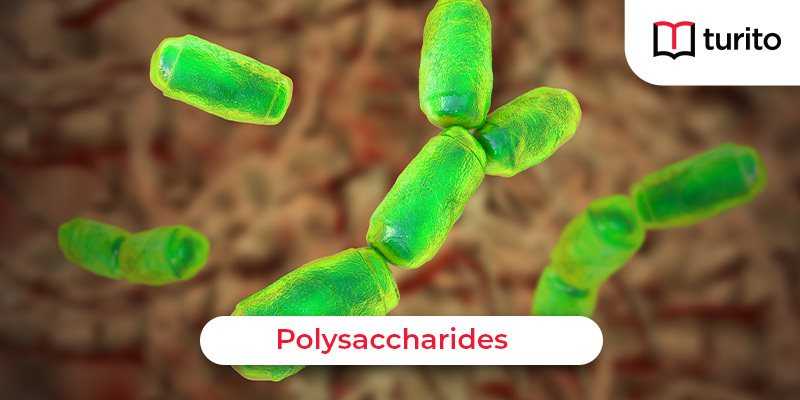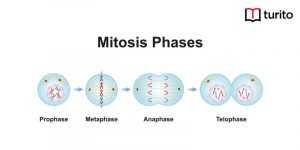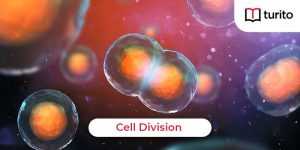What is a Polysaccharide?
Polysaccharides are a major group of biomolecules made of long chains of carbohydrate molecules, consisting of several smaller monosaccharides. These bio-macromolecules act as a vital source of energy in animal cells and constitute a structural component of a plant cell
Depending on the type of monosaccharides present, they can be homopolysaccharides or heteropolysaccharides. Additionally, they can occur as a straight chain of monosaccharides called linear polysaccharides, or they can be branched, known as branched polysaccharides.
Structure of Polysaccharides

To understand what a polysaccharide is, it is important to understand its structure. Almost all polysaccharides are prepared by the same fundamental process, where monosaccharides are linked by bonds called glycosidic bonds, which are formed by an oxygen molecule forming a bridge between two carbon rings.
The bond is produced when a hydroxyl group is expelled from the carbon atom of one molecule, while the hydrogen is expelled from the hydroxyl group of another monosaccharide. Because two hydrogen molecules and one oxygen molecule are lost, the reaction is a dehydration reaction.
The structures of the molecules that combine to form the polysaccharides determine their final structure and properties. A polysaccharide utilized for energy storage will give easy access to the monosaccharides it is made up of. In contrast, a polysaccharide utilized for support is usually a long chain of monosaccharides that form fibrous structures.
Characteristics Of Polysaccharides
The following are the important characteristics of polysaccharides:
- They are not sweet.
- They are soluble with a variation in their solubility in different solvents based on their structure and molecular weight. Most of them are insoluble in water. Larger polysaccharides with a higher molecular weight are insoluble in most solvents due to their high surface area and volume.
- They are hydrophobic; that is, they are not attracted to water. Charged polysaccharides (that may contain positive and negative charges) show greater affinity towards water.
- They do not produce crystals on desiccation.
- They are high molecular weight carbohydrates.
- They are compact and osmotically inactive inside the cells.
- They are composed of hydrogen, carbon, and oxygen. The hydrogen-to-oxygen ratio is 2:1.
Types Of Polysaccharides
They are classified into two types:
- Homopolysaccharides.
- Heteropolysaccharides.
Homopolysaccharides
These polysaccharides contain the same type of monosaccharides. Homopolysaccharide examples are:
Glycogen: It is composed of a large chain of molecules and is found in animals and fungi.
Cellulose: The cell wall of plants is composed of cellulose, which is made up of long chains of ꞵ-glycosides.
Starch: Starch is formed as a condensation product of amylose and amylopectin. It is found in large quantities in plants, fruits, and seeds.
Inulin: It is made up of several fructofuranose molecules linked together in chains and is found in the tubers of plants like dahlia and artichoke.
Heteropolysaccharides
A polysaccharide that is composed of different types of monosaccharides is known as a heteropolysaccharide. Some examples of heteropolysaccharides are:
Hyaluronic Acid: It is composed of D-glucuronic acid and N-acetyl-glucosamine and is found in connective tissues and the skin of organisms.
Heparin: It is composed of D-glucuronic acid and N-sulfo-D-glucosamine. It is largely distributed in our mast cells and blood.
Chondroitin-4-sulfate: Its constituent sugars are D-glucuronic acid and N-acetyl-D-galactosamine-4-O-sulfate: It is found in cartilages.
Gamma globulin: N-acetyl-hexose amine, D-mannose, and galactose are the constituents of the polysaccharide gamma globulin. It is found in our blood.
Functions Of Polysaccharides
Primarily, They serve as a structural, organizational component in animals and plants. Some other functions of polysaccharides are:
- They help in storing energy in organisms.
- Because they contain multiple hydrogen bonds, the water cannot invade the molecules, making them hydrophobic.
- They help maintain the concentration gradient, impacting the cells’ uptake of nutrients and water.
- Many of them bond covalently with lipids and proteins to produce glycolipids and glycoproteins, which are then used to send messages or signals between and within the cells.
- They provide mechanical support to the cells. The plant’s cell wall comprises polysaccharide cellulose, which renders support to it. In insects and organisms like fungi, chitin plays a vital role in supporting the extracellular matrix surrounding the cells.
Polysaccharide Examples
Homopolysaccharides
Starch: is a type of storage polysaccharide found in plant cells and exists in two forms— amylose and amylopectin. Amylose is the spiral form of starch composed of only alpha-1,4 linkages and amylopectin that possesses a structure like glycogen, with the exception that the branched alpha-1,6 linkages are seen on only about one in 30 monomers.

Glycogen: This is a storage polysaccharide seen in animals to store energy. It comprises alpha-1,4-glycosidic bonds with branched alpha-1,6 bonds that occur at about every tenth monomer. The liver and muscles mostly produce it, but it can also be produced during a process called glycogenesis.

Cellulose: This is a structural polysaccharide seen in the plant’s cell wall that, when consumed, functions as a dietary fiber. Cellulose is referred to as one of the most abundant organic molecules on earth. Some common forms of cellulose are wood, paper, and cotton.

Heteropolysaccharides
These occur as different structural and functional components in the human body.
Hyaluronic acid: It functions as a lubricant in the synovial fluid of joints.
Chondroitin sulphate: It contributes to the tensile strength and elasticity of cartilages, ligaments, tendons, and walls of the aorta.
Dermatan sulphate: It is mainly found in the skin and is also present in blood vessels, the heart, and the lungs. It may be associated with coagulation, vascular diseases, and other medical conditions.
Keratan sulphate: It is present in the cornea, bone, cartilage, and a variety of other structures such as nails and hair.
Heparin: It is present as an anticoagulant in the blood.
Many other types are found in the human body, including glycosaminoglycans or mucopolysaccharides that are formed by the endoplasmic reticulum and mature in the Golgi apparatus. They are important components of connective tissues and are also found in collagen and elastin.
Digestibility of Polysaccharides
The digestibility of starch depends on several factors. At a molecular level, it is influenced by the ratio of amylose to amylopectin. The amylose chains give rise to a helical structure that lies packed within the starch granule. These structures are more susceptible to amylase hydrolysis and digestion.
On the other hand, amylopectin is less prone to undergo amylolysis or digestion due to the tight stuffing of double-helical chains in their granules. Therefore, starches with high amylose content have higher digestibility in an uncooked state. Examples of food sources of polysaccharides (starch) are potatoes, sweet potatoes, tapioca, rice, wheat, and maize.
Biological Importance of Polysaccharides
They, just like other carbohydrates, act as a major energy source; therefore, they are one of the main dietary components. When animals consume them, they obtain monosaccharides that they can use to synthesize ATP. ATPs are required by the body to carry out different metabolic processes.
The most common form of monosaccharide used by the cell to synthesize ATP is glucose. From glucose, ATP is produced via substrate-level phosphorylation or oxidative phosphorylation. One of the sources of glucose is a high-carbohydrate diet. Excess carbohydrates in the diet, though, could result in health problems. Persistently high blood glucose levels could eventually lead to a medical condition called diabetes mellitus.
The gut would also need to apply greater efforts to digest them. If there is too much fructose in the small intestine, it could lead to malabsorption. When this happens, unabsorbed fructose goes to the large intestine, which could be used for fermentation by the colonic flora. This could result in gastrointestinal pain, bowel disturbances, or bloating.
The glucose that is not needed is stored in the form of starch by the plants. These plants are harvested to extract the starch for use in food preparation and industrial purposes. They are also vital in living organisms as they are major structural components of biological structures like cellulose and chitin. Plant cellulose is extracted for its diverse uses in the industry.
Conclusion
It can be concluded that polysaccharides have very complex structural properties regarding their composition, bonds, degree of branching, molecular weights, and the presence of special groups. Understanding what is a polysaccharide and knowing about its basic structural properties could better facilitate their applications in food and non-food industries.
Frequently Asked Questions
Q1. What is Glycogenesis?
A: Glycogenesis is the metabolic process through which glycogen is produced from glucose for storage. It primarily occurs in the liver and muscle cells due to high glucose levels in the bloodstream. When the body needs energy, this glycogen is broken down into glucose through the process of glycogenolysis.
Q2. How are Carbohydrates Stored in the Body?
A: The carbohydrates are stored in the body in the form of glycogen so that when the demand for glucose is greater, it can be taken from this reserve through glycogenolysis.
Q3. Do polysaccharides Help in Cellular Communication?
A: Several polysaccharides become glycoconjugates when they covalently bond to proteins or lipids. These glycolipids and glycoproteins send signals between and within the cells.
Q4. What are Bacterial Polysaccharides?
A: Bacterial polysaccharides are those polysaccharides that occur in the cell walls and membranes of bacteria. Bacterial polysaccharide examples are peptidoglycans, lipopolysaccharides, and exopolysaccharides.

Relevant Articles
Structural Organisation & Different Levels
Structural Organisation The most extensive, in-depth studies begin with the …
Structural Organisation & Different Levels Read More »
Read More >>What is Mitosis? Phases of Mitosis, Diagrams, Cytokinesis
Mitosis phase Have you ever wondered what the yeast in …
What is Mitosis? Phases of Mitosis, Diagrams, Cytokinesis Read More »
Read More >>What is Cell Division? Process, Cell Cycle, Mitosis
What is cell division? Each day, every hour, every second, …
What is Cell Division? Process, Cell Cycle, Mitosis Read More »
Read More >>



















Comments: